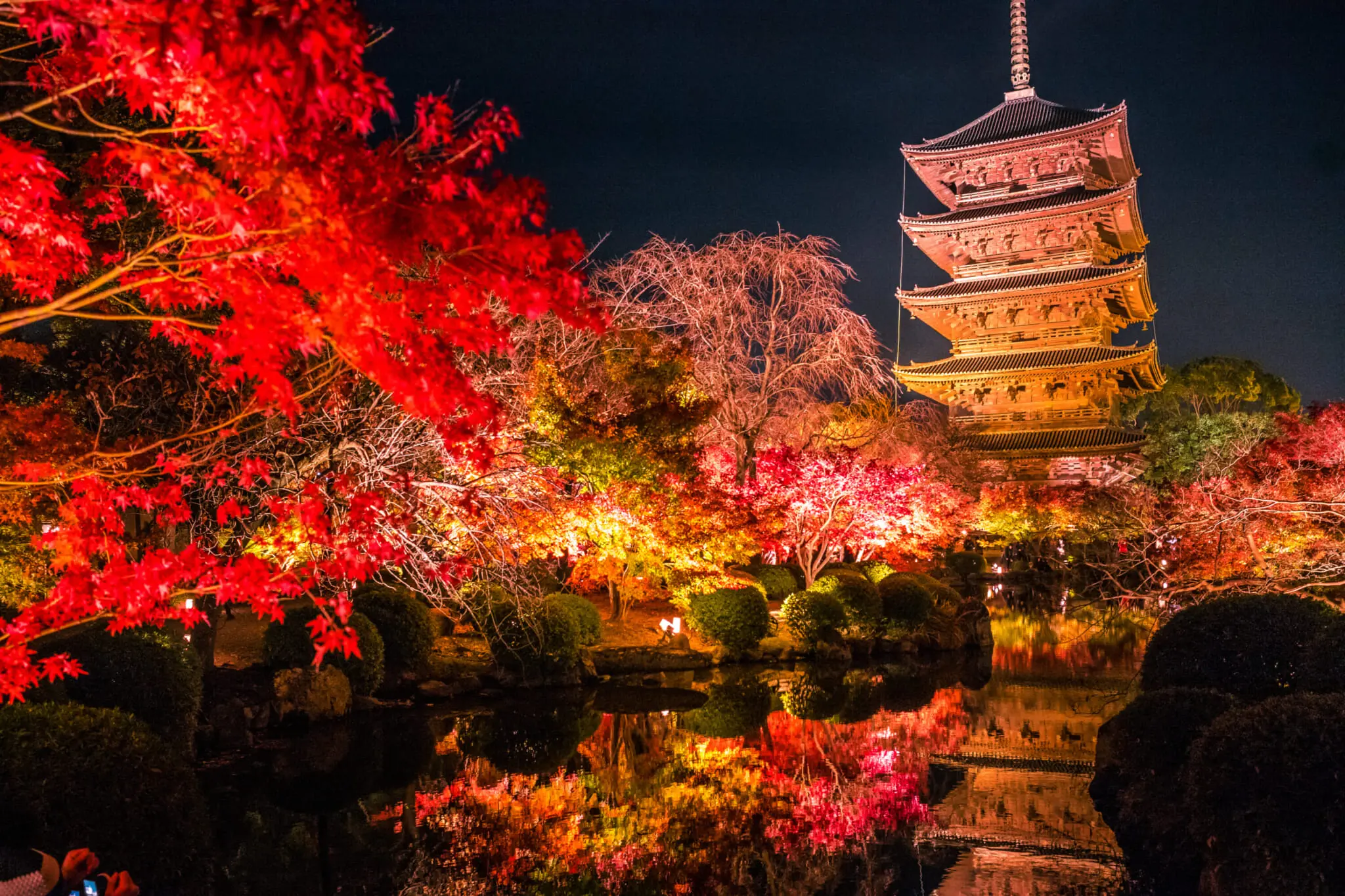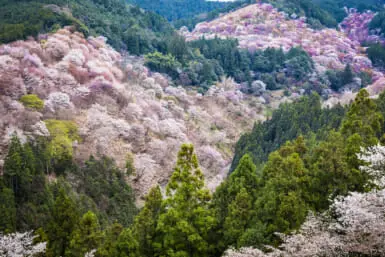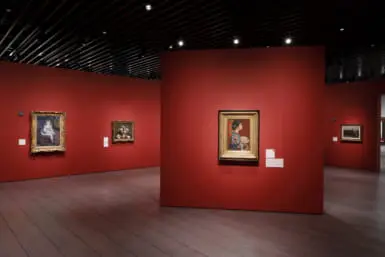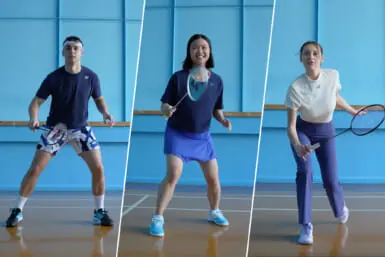Autumns in Kyoto are world-renowned for a reason. Come November, the city colors in brilliant shades of scarlet and gold, highlighting the mythical beauty of its countless temples, shrines and historical paths. As much as visitors delight in admiring maple and ginkgo trees in the daylight, the magic of Kyoto’s foliage heightens after dark. Many sites light up past regular opening hours, so you can see the vibrant leaves cast in an ethereal glow. Read on for a list of the city’s best Japanese Maple illuminations.
Top 3 Temples in Kyoto for Japanese Maple Illuminations
Visiting Kyoto temples at night to enjoy illuminated maple trees is a popular activity for tourists and locals alike in fall. These three temples tend to see the highest number of visitors, with each location featuring an enchanting scene.

Toji Temple
Located near Kyoto Station, Toji Temple is a convenient and frequently visited spot to view autumn leaves at night. The tallest wooden pagoda in Japan is shrouded in an orange glow alongside the jewel-toned trees. Hyotan Pond’s glimmering reflection of the scene appears to be straight out of a painting.
Schedule: October 26 to December 8
Night Hours: 18:00–21:30 (last entry 21:00)
Price: ¥1,000

Eikando Temple
Home to some 3,000 Japanese maple trees, Eikando Temple is often referred to as the ultimate Japanese Maple temple of Kyoto. First established in the year 853, Eikando is currently the head temple of the Seizan Zenrinji School of the Jodo sect of Buddhism. Despite the crowds, this temple is an incredible sight to behold during the day and at night, boasting shades of crimson, orange and golden-yellow that envelop the awestruck visitors. While you can see maple trees all over the temple grounds, make sure to witness the beauty of Hojo Pond, Eikando’s iconic autumnal sight.
Schedule: November 11 to December 1
Night Hours: 17:30-21:00 (last entry 20:30)
Price: ¥700

Kiyomizu Temple
Kiyomizu Temple is renowned for its sweeping view of Higashiyama and seasonal landscapes year-round, but it is perhaps most beloved for its stunning fall scenery. Like Eikando and Toji, this UNESCO World Heritage Site brings in huge crowds every November — but it is worth visiting at least once. The Main Hall appears to float atop a fiery forest of maple leaves, creating a memorable scene.
Schedule: November 18 to November 30
Night Hours: 17:30-21:30 (last entry 21:00)
Price: ¥500 (It costs an additional ¥600 to enter Jojuin Garden, which is only open from November 18 to November 30. Jojuin Garden’s night hours are 18:00-20:30)
Sightseeing Trains Through Japanese Maple Tunnels
If you want to see Kyoto’s Japanese Maple illuminations in a more dynamic fashion, you may want to check out these sightseeing trains. Traveling through glowing amber tunnels, the trains offer guests an otherworldly experience.
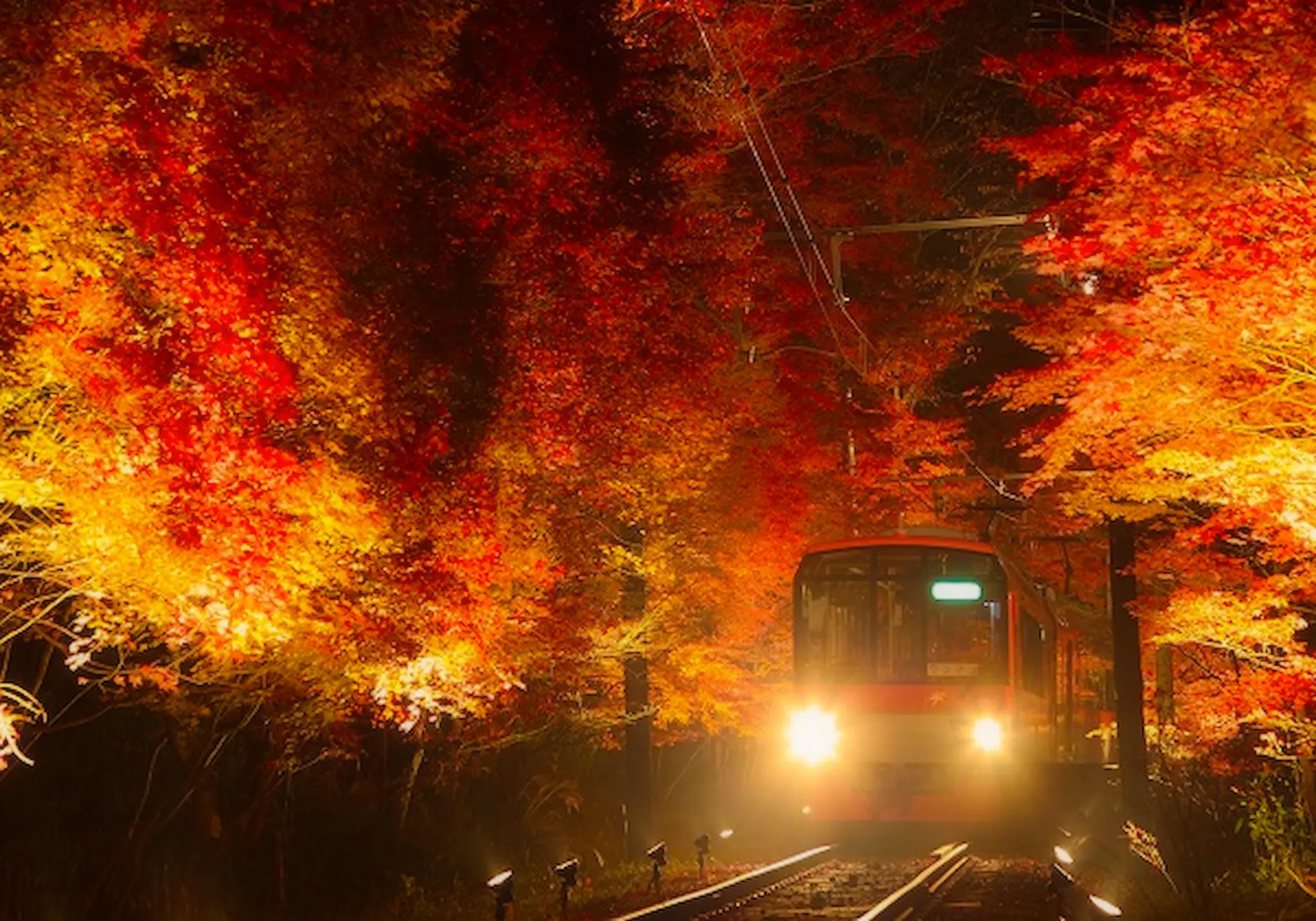
Courtesy of Eizan Railway
Eizan Railway Trains
Kirara is Eizan Railway’s special panoramic train fitted with large glass windows for optimal viewing of the changing seasonal scenery. It travels from Demachiyanagi (near Kyoto Imperial Palace) to Kurama. The famous momiji (Japanese Maple) tunnel is located between Ichihara and Ninose stations. Eizan Railway’s other sightseeing train, Hiei, features smaller oval windows, but nonetheless offers gorgeous views of the maple-lined path.
Schedule: Year-round, but November 9 to November 24 is the suggested viewing window for this year’s fall foliage.
Night Hours: 16:30 until the last train. Check each train’s weekday and weekend timetables.
Price: ¥220-¥470. Check this fare table for details.

Sagano Romantic Train
Sagano Romantic Train, a trolley train that runs along the Hozu River, offers a mesmerizing autumnal journey from Arashiyama to Kameoka and vice versa. Gazing at the fluttering red maple leaves from the train windows is an amazing experience during the day, but the maple tree paths are truly enchanting when they are cast in an ethereal light after sunset. The train slows down at key viewing locations.
Schedule: October 12 to December 29
Night Hours: 16:30-Last Train
Price: ¥880 one-way
Best Mirrored Japanese Maple Illuminations
While these locations featuring gorgeous reflective landscapes are popular year-round, they are particularly cherished during the fall. Whether it is a lacquered table or rippling water, the mirrored surfaces create a surreal double vision of autumnal colors. Visitors gaze at these strikingly cinematic sceneries in collective silence and admiration.

Rurikoin
Rurikoin Temple is part of Komyoji Temple, located in an area called Yase at the foot of Mount Hiei. Since ancient times, Yase has attracted crowds admiring its magnificent fall foliage. Rurikoin is only open during each season’s special viewing periods. For walk-in visitors, the temple is open from December 2 to December 15 between 10 a.m. and 5 p.m. (last entry at 4:30 p.m.) at a cost of ¥2,000 per adult. All other daytime visits are reservation-only, between 9 a.m. and 6 p.m. See below for special nighttime hours.
Schedule: November 9-10, November 15-24, November 26-December 1
Night Hours: 18:15-20:00 (last entry 19:30)
Price: ¥7,000 for JR Tokai’s “Kyoto Rakuhoku Maple Journey” package (includes Rurikoin Temple Special Nighttime Viewing, Eizan Railway one-day pass and Eizan Cable Car round-trip ticket)
Check Rurikoin’s website for details on daytime visits and reservations.
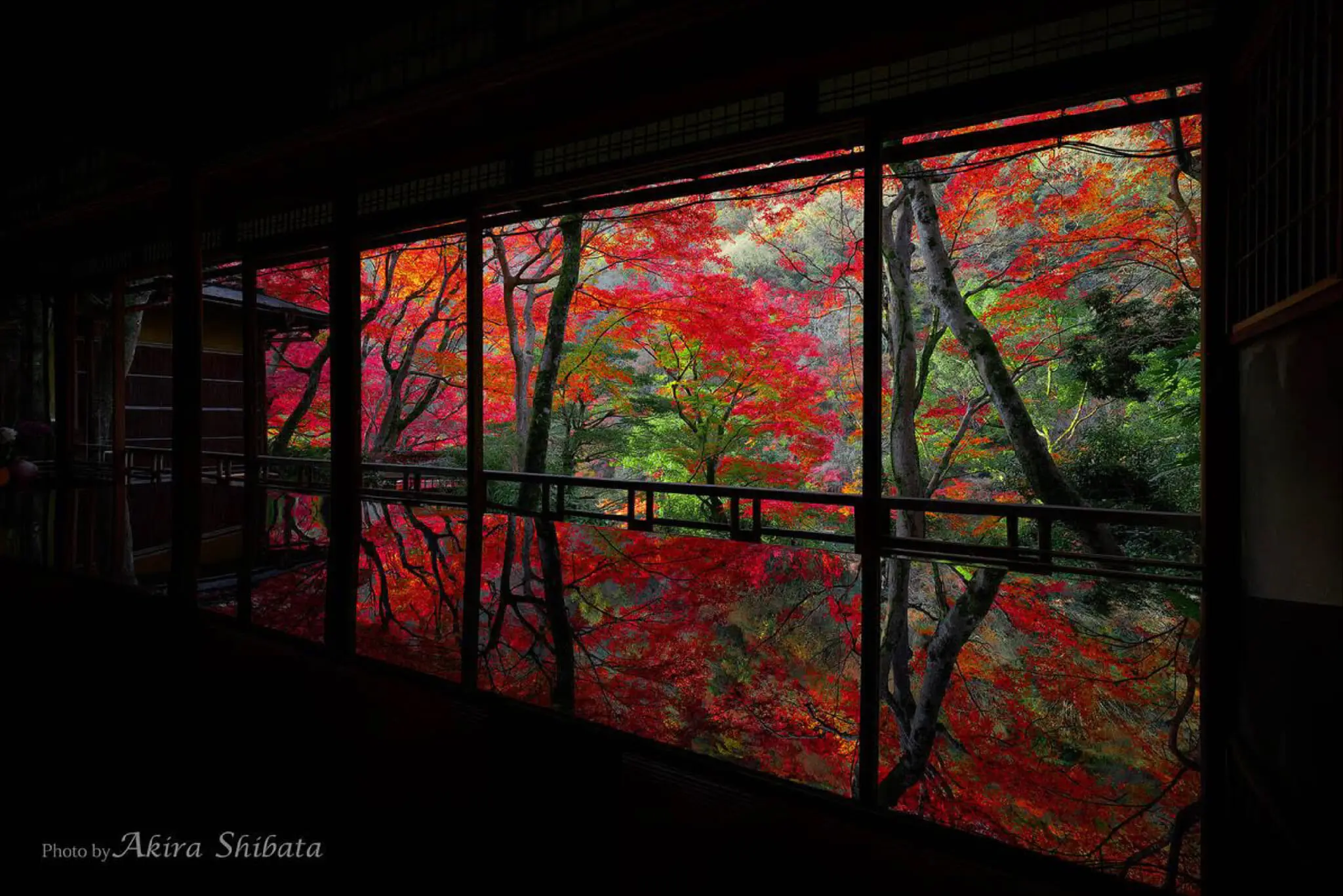
yasunari kawabata’s room, courtesy of akira shibata
Arashiyama Yusaitei
Originally a culinary inn constructed in the Meiji era, Yusaitei is now an art gallery in Arashiyama known for its window views of maple trees. The prismatic fall colors are reflected on the lacquered table beneath, forming an otherworldly vision in The Round Windows Room. Another room features a rectangular landscape view of the maples reflected in a water mirror. The gallery also has a tranquil viewing space labeled Yasunari Kawabata’s Room, where the Nobel Prize-winning author stayed and wrote The Sound of the Mountain.
Schedule: November 16-December 1
Night Hours: 18:00-20:00 (last entry 19:30)
Price: ¥3,500 for JR Tokai’s “Special Nighttime Private Tour”
Check Yusaitei’s website for for regular daytime visiting hours & reservations.

